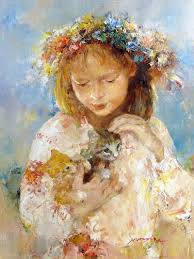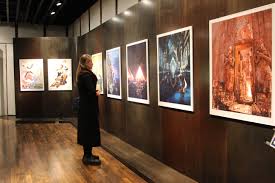Chinese craftsmen
RUSSIAN ACADEMY OF ART OF ST. PETERSBURG (part 2)
 Under Catherine II, in 1764, a new detailed Charter of the Imperial Academy of Arts was adopted, and the close sovereign Ivan Ivanovich Betskoy became president. The Empress wrote: “For better encouragement and success, We, having taken this Academy into Our patronage … determine it to be under our sole Imperial jurisdiction, providing it with the amount necessary for its maintenance.” In the early period of the reign of Catherine II, a kind of “state utopia” of enlightened Russia arose, and the Academy of Arts had to play an important role in creating a visible image of the transformed empire.
Under Catherine II, in 1764, a new detailed Charter of the Imperial Academy of Arts was adopted, and the close sovereign Ivan Ivanovich Betskoy became president. The Empress wrote: “For better encouragement and success, We, having taken this Academy into Our patronage … determine it to be under our sole Imperial jurisdiction, providing it with the amount necessary for its maintenance.” In the early period of the reign of Catherine II, a kind of “state utopia” of enlightened Russia arose, and the Academy of Arts had to play an important role in creating a visible image of the transformed empire.
Catherine II described her reign in a letter to her permanent correspondent, ambassador of the tiny German state of Saxe-Goth in Paris, Baron Melchior Grimm, ironically alluding to one of La Fontaine’s fables and, in addition Continue reading
LENINGRAD SCHOOL OF PAINTING (part 2)
 In the narrow, literal sense, the Leningrad school usually means the Leningrad Institute of Painting, Sculpture and Architecture named after I.E. Repin (LIZHSA) from 1932 until the early 1990s, its traditions, teachers, pupils and their artistic heritage.
In the narrow, literal sense, the Leningrad school usually means the Leningrad Institute of Painting, Sculpture and Architecture named after I.E. Repin (LIZHSA) from 1932 until the early 1990s, its traditions, teachers, pupils and their artistic heritage.
In a broader sense, the concept of “Leningrad school”, in addition to the LIJSA named after I. E. Repin, includes a group of institutions closely associated with the institute of higher and secondary educational institutions, as well as the Leningrad Union of Artists from its inception in 1932 until the beginning of the 90s. x years. Continue reading
VITEBSK ART SCHOOL (part 2)
 Having learned the lessons of new European art and declaring himself to be a rapidly maturing master, M. Chagall returned to Vitebsk on the eve of the First World War. In fact, in less than a decade, from an unknown student of a provincial artist, he grows into one of the leading masters of the emerging avant-garde. And this is not surprising if you pay attention to how easily and organically he created his original art system, attracting childishly naive imagination and romantic metaphor, intrepidly departing from realism and ahead of the masters of Western Europe, whose evolution indicates the intense efforts made to free oneself from the tenacious embrace of the artistic tradition. Continue reading
Having learned the lessons of new European art and declaring himself to be a rapidly maturing master, M. Chagall returned to Vitebsk on the eve of the First World War. In fact, in less than a decade, from an unknown student of a provincial artist, he grows into one of the leading masters of the emerging avant-garde. And this is not surprising if you pay attention to how easily and organically he created his original art system, attracting childishly naive imagination and romantic metaphor, intrepidly departing from realism and ahead of the masters of Western Europe, whose evolution indicates the intense efforts made to free oneself from the tenacious embrace of the artistic tradition. Continue reading




